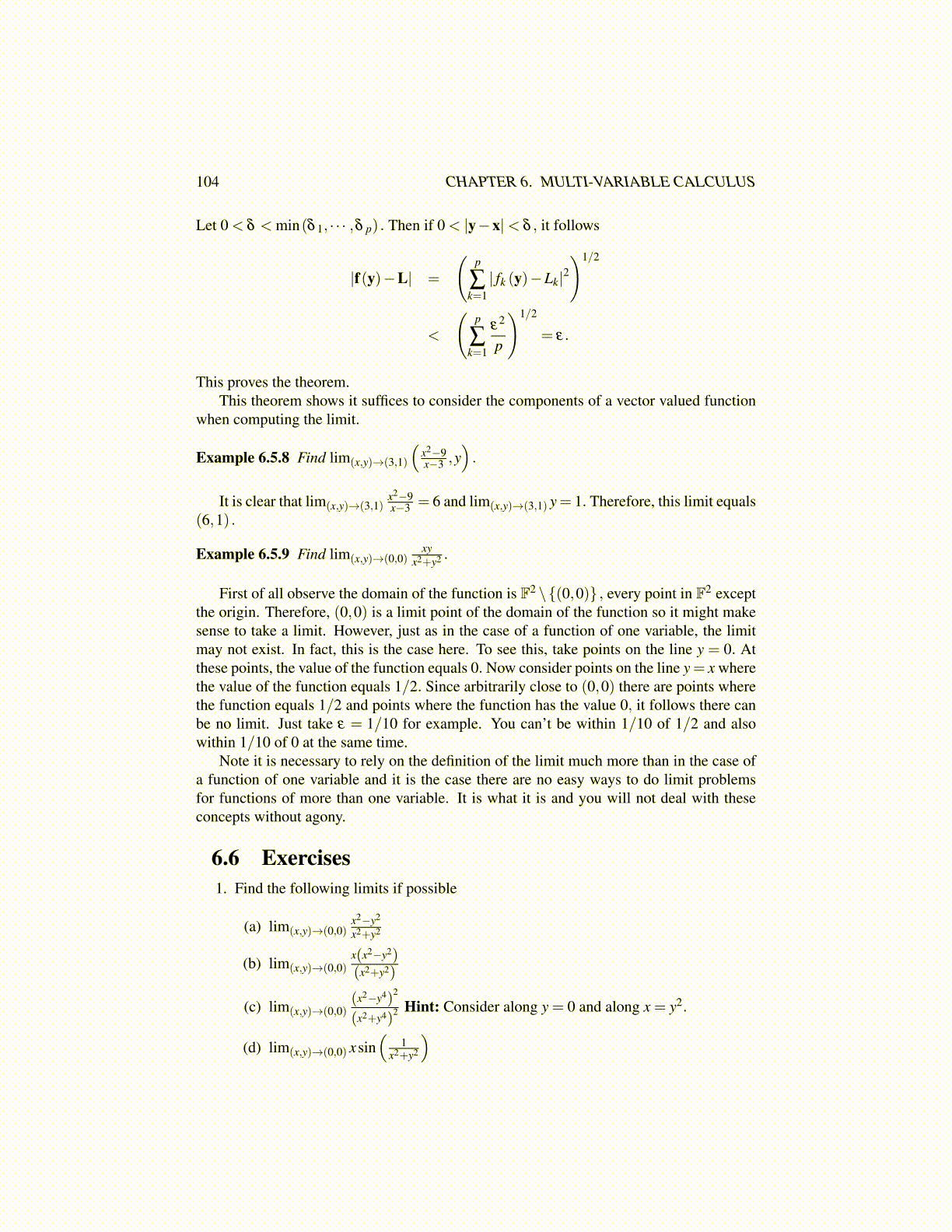
104 CHAPTER 6. MULTI-VARIABLE CALCULUS
Let 0 < δ < min(δ 1, · · · ,δ p) . Then if 0 < |y−x|< δ , it follows
|f(y)−L| =
(p
∑k=1| fk (y)−Lk|2
)1/2
<
(p
∑k=1
ε2
p
)1/2
= ε.
This proves the theorem.This theorem shows it suffices to consider the components of a vector valued function
when computing the limit.
Example 6.5.8 Find lim(x,y)→(3,1)
(x2−9x−3 ,y
).
It is clear that lim(x,y)→(3,1)x2−9x−3 = 6 and lim(x,y)→(3,1) y= 1. Therefore, this limit equals
(6,1) .
Example 6.5.9 Find lim(x,y)→(0,0)xy
x2+y2 .
First of all observe the domain of the function is F2 \{(0,0)} , every point in F2 exceptthe origin. Therefore, (0,0) is a limit point of the domain of the function so it might makesense to take a limit. However, just as in the case of a function of one variable, the limitmay not exist. In fact, this is the case here. To see this, take points on the line y = 0. Atthese points, the value of the function equals 0. Now consider points on the line y= x wherethe value of the function equals 1/2. Since arbitrarily close to (0,0) there are points wherethe function equals 1/2 and points where the function has the value 0, it follows there canbe no limit. Just take ε = 1/10 for example. You can’t be within 1/10 of 1/2 and alsowithin 1/10 of 0 at the same time.
Note it is necessary to rely on the definition of the limit much more than in the case ofa function of one variable and it is the case there are no easy ways to do limit problemsfor functions of more than one variable. It is what it is and you will not deal with theseconcepts without agony.
6.6 Exercises1. Find the following limits if possible
(a) lim(x,y)→(0,0)x2−y2
x2+y2
(b) lim(x,y)→(0,0)x(x2−y2)(x2+y2)
(c) lim(x,y)→(0,0)(x2−y4)
2
(x2+y4)2 Hint: Consider along y = 0 and along x = y2.
(d) lim(x,y)→(0,0) xsin(
1x2+y2
)